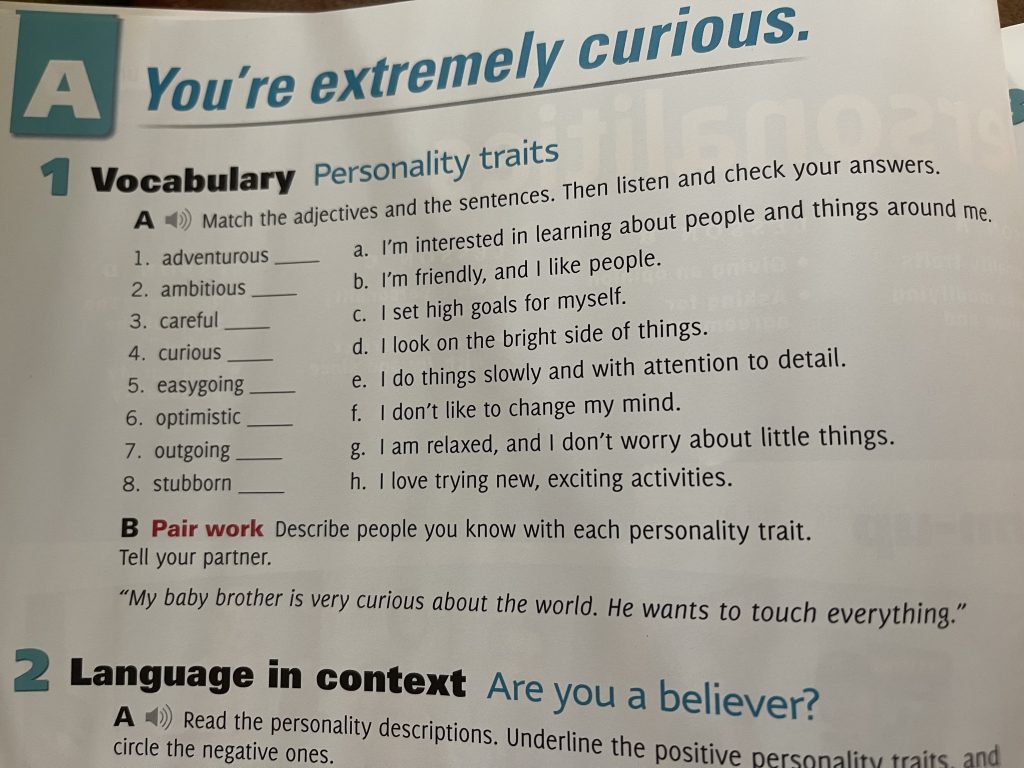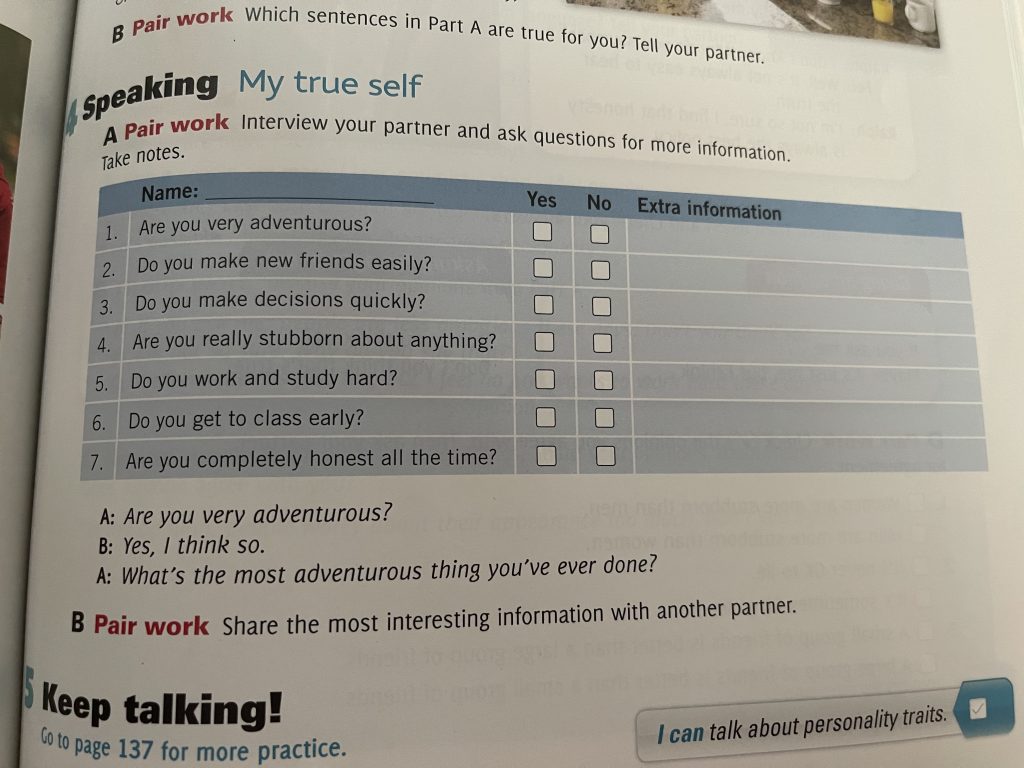The chapter that I will be reviewing is Unit 7, pages 63-72 and is called Personalities. The intended learning outcomes for this chapter is for the L2 learner to be able to talk about personality traits, give an opinion, ask for agreement, and talk about their own and others personalities. The grammar skills being addressed is adverbs modifying adjectives and verbs as well as present perfect with for and since. This chapter also addressed interactions that may involve giving an opinion or asking for agreement. This section is important for overall social interaction and how to communicate and listen to different types of people. It goes over how you should listen to the way people talk and how that may differ from the way you talk and listen.
As with all chapter’s in this book, the chapter is filled with plenty of activities either for the individual or with a pair or group. The unit is structured into 4 different sections that practice different areas of the same topic and in those sections, it is separated into vocabulary practice, language in context, grammar, and then speaking. For section 1 the first activity is simply matching the adjectives to the sentence it matches with the most, this is individual work. The clear instructions are provided for the student through the activity and it is not too challenging. Then the last activity of that section, speaking, is pair work where the student interviews their partner and asks information about their personality such as “Are you adventurous?”. This activity is the opposite of the first one in the sense that it doesn’t provide much instruction and leaves room for the students in the group to take control of the activity. The first section doesn’t present much of a challenge to the student but , the activities do build upon one another which leaves the last activity being the most difficult and unregulated which offers a lot of freedom for the student.
The activities are designed to be fun for the students and to motivate them to want to learn. For example in this chapter it has multiple activities that have pair or group work, giving the students the ability to work with their peers. In one of the activities of this chapter it asks for the reader to tell their group about three friends that they have and some personality traits that they demonstrate. It is interactive and engaging for the students and they are also able to get to know more about one another. There are many activities in this chapter that are unstructured like this one that allowed students to talk freely with one another and talk about things that they like, i.e. their friends. The entertaining graphics and easy to ready activities make learning from this textbook a very productive experience.
From a teacher’s perspective the continuity of the same design of chapters throughout the whole book is very nice. For some students the repetitiveness of the design of the chapters may be beneficial, however, for others the activities and units may become too repetitive and it may lose their interest. Though the activities vary throughout the entire textbook, it is still the same design of vocabulary practice, language in content, grammar, and then speaking. There are pros and cons to having the units set up the same way throughout the entire textbook.
I believe that this unit demonstrates how useful this textbook can be for both the teacher and the student that is using it. Overall similarly to many other chapters in this textbook I think that it provides the students with a lot of material while also keeping things exciting. It covers a lot of information that is crucial for an English learner and the activities that are included in this chapter are able to cover all of that material in a very effective way.

